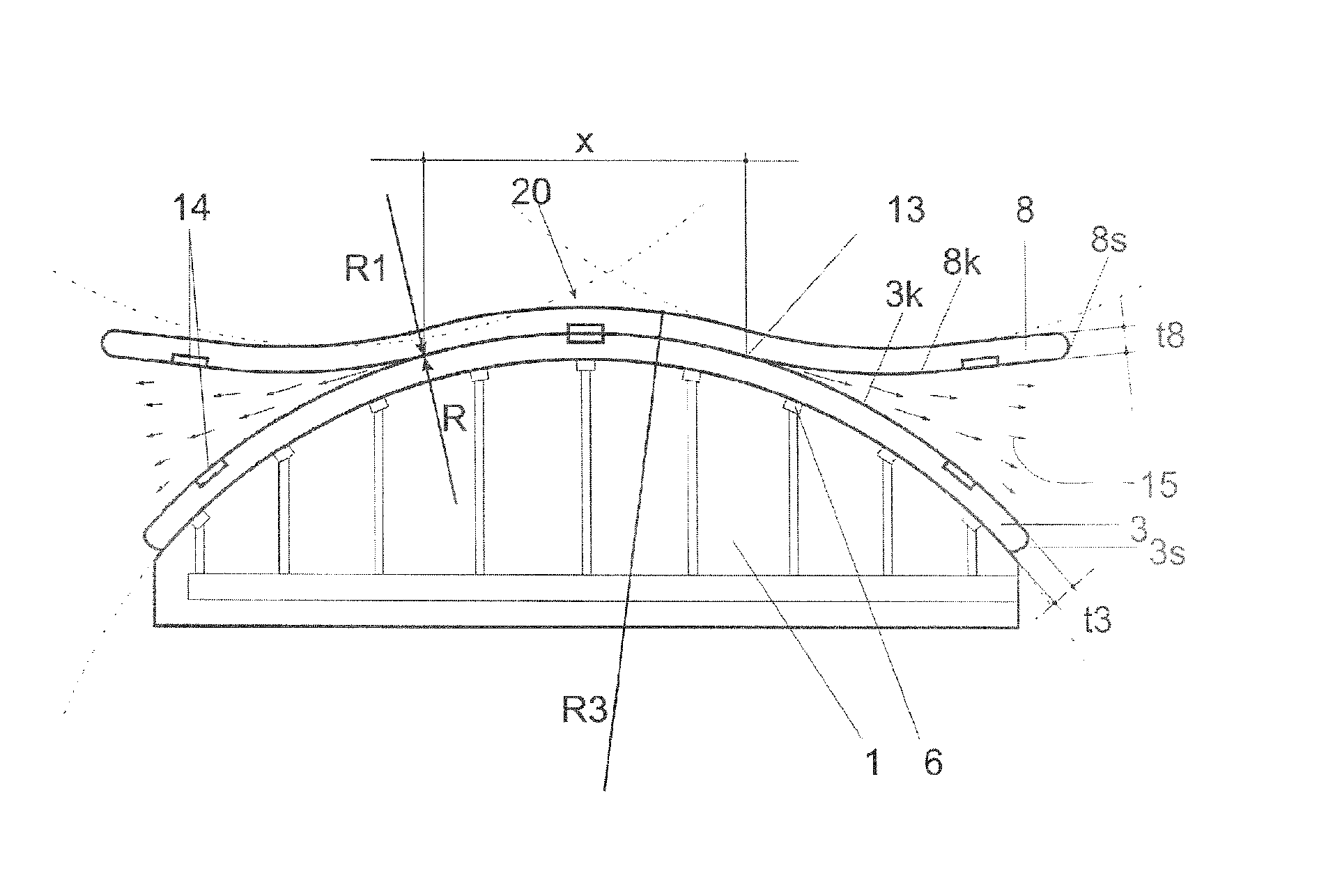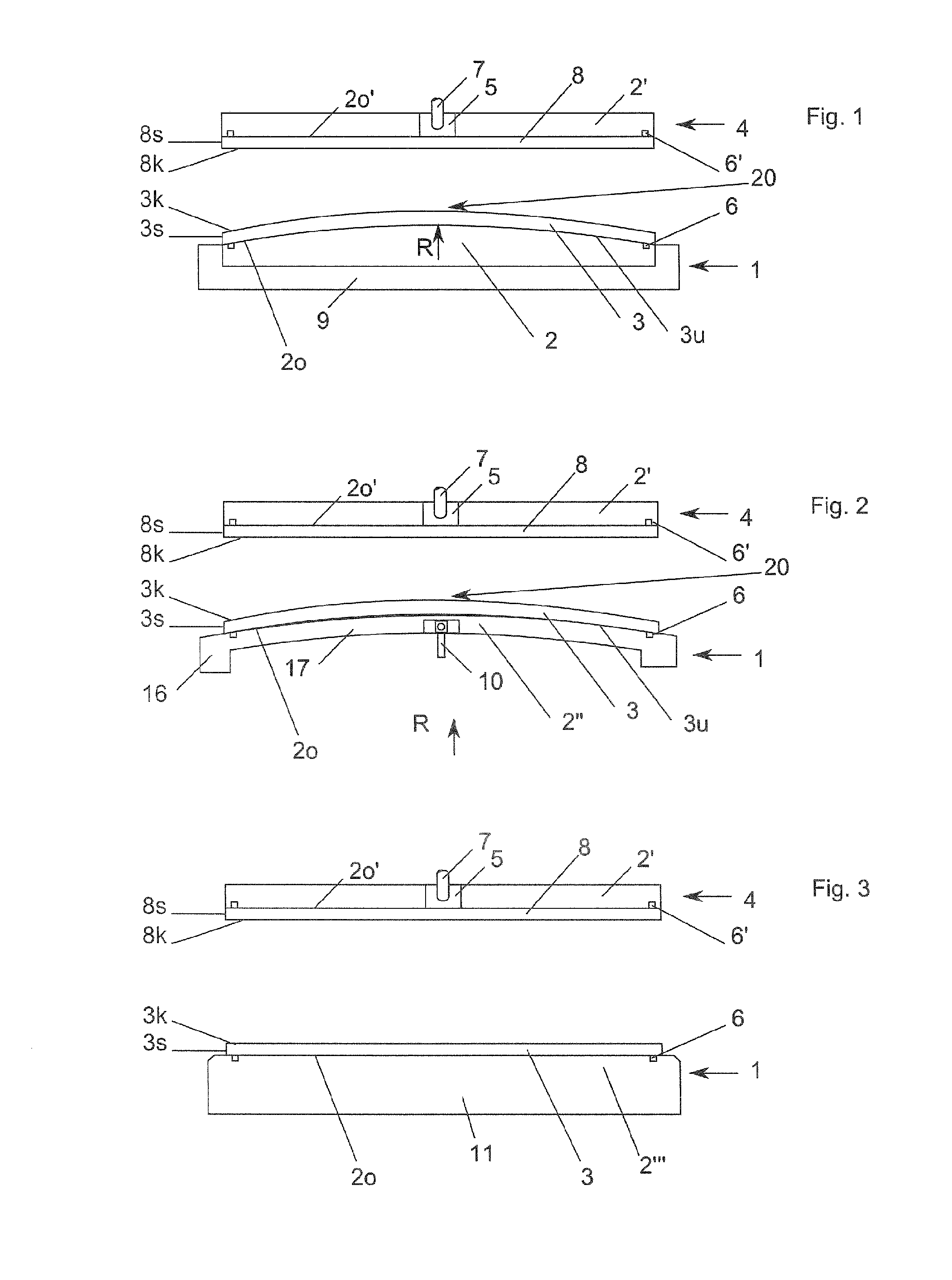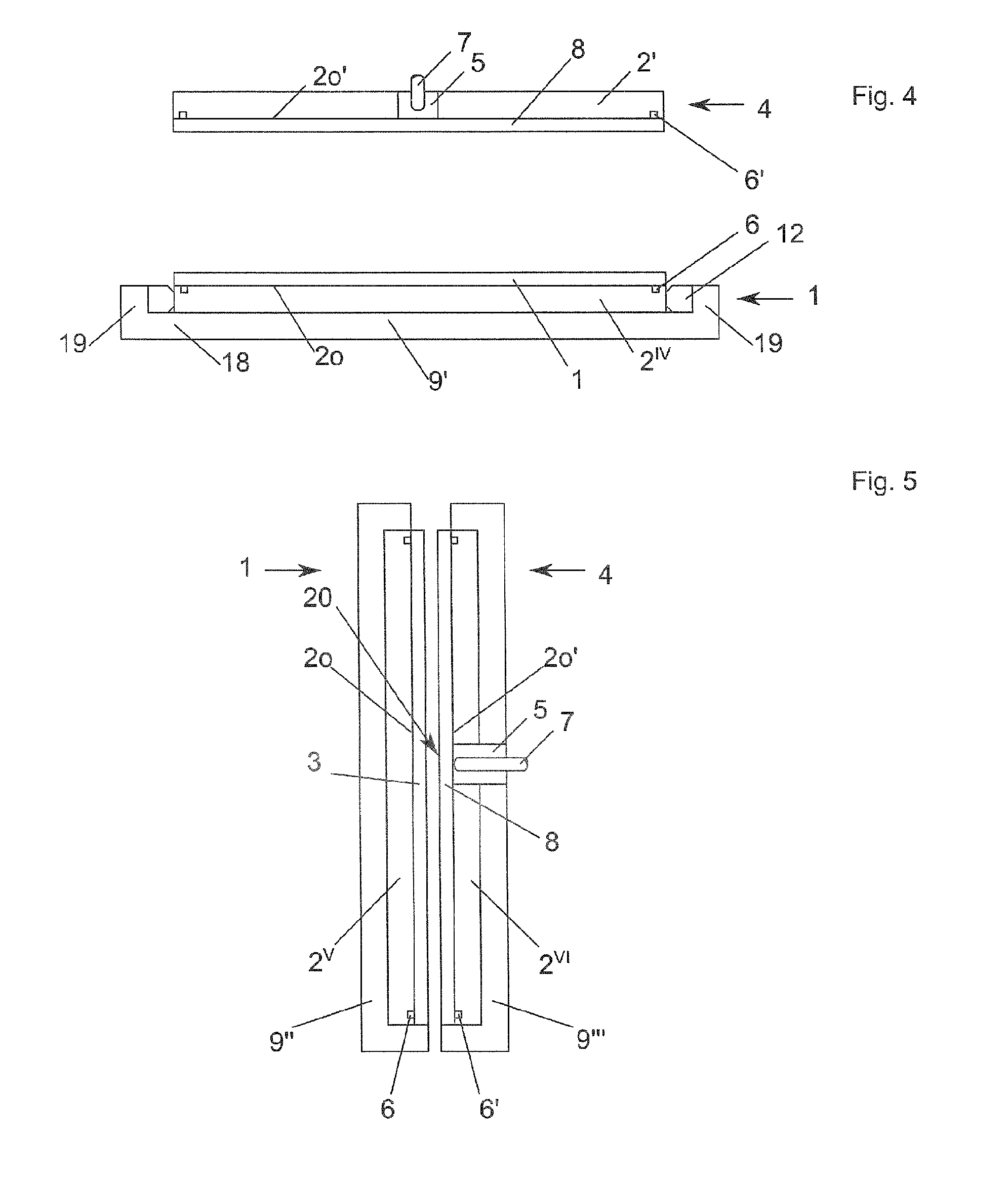Device and method for bonding substrates
a technology of substrates and devices, applied in the field of devices and methods for bonding substrates, can solve the problems of complex run-out fault compensation and complex mathematical-physical description of bonding wave behavior, and achieve the effect of facilitating the deformation as claimed in the invention
- Summary
- Abstract
- Description
- Claims
- Application Information
AI Technical Summary
Benefits of technology
Problems solved by technology
Method used
Image
Examples
second embodiment
[0101]FIG. 2 shows a second embodiment with a mounting body 2″ in which the first mounting surface 2o can be deformed in a controlled manner by an actuating element 10, which in the embodiment shown is a pull rod and / or push rod. The mount 2″ has a concentrically running fixing section 16 and a deformation section 17 which encompasses the first mounting surface 2o. The deformation section 17 has at least predominantly a constant thickness and thus a predominantly constant bending stiffness. The actuating element 10 is located and fixed, on the actuating side of the deformation section 17 facing away from the mounting surface 2o. By means of the actuating element 10, the deformation section 17 can be deformed in the micrometer range and can be curved convexly and concavely. The actuating element 10 travels more than 0.01 μm, preferably more than + / −1 μm, more preferably more than + / −1 μm, still more preferably more than + / −100 μm, most preferably more than + / −1 mm, most preferably of...
third embodiment
[0102]FIG. 3 shows a third embodiment with a first mounting apparatus 1 with a mounting body 2′″. The mounting body 2′″ has the first mounting surface 2o for accommodating the first substrate 3. Furthermore, the first mounting apparatus 1 in this embodiment has temperature control means 11 for temperature control (heating and / or cooling) of the mounting body 2′″ at least in the region of the first mounting surface 2o, and preferably the entire mounting body 2′″.
[0103]In the first procedure, the first substrate 3 is fixed on the heated mounting body 2′″ only after reaching its expansion which has been caused by the temperature difference. In this way, the first substrate 3 expands according to its own coefficient of thermal expansion.
[0104]In a second procedure, the first substrate 3 is fixed on the mounting body 2′″ before thermal loading by the temperature control means 11. By changing the temperature control means 11, the mounting body 2′″ and thus the first mounting surface 2o wi...
fourth embodiment
[0105]FIG. 4 shows a fourth embodiment with a base body 9′ with a mounting section 18 for accommodating a mounting body 2IV. The base body 9′ comprises a shoulder section 19 which adjoins the mounting section 18 and which is made circumferential. The shoulder section 19 is used as a stop for actuating elements 12, which are used for deformation of the mounting body 2IV in the lateral direction. The actuating elements 12 in the form of plurality of pulling and / or pushing elements 12 are arranged and distributed on the lateral periphery of the mounting body 2IV. The actuating elements 12 are used for deformation of the mounting body 2IV in the lateral direction, by mechanical expansion and / or compression, preferably in the micrometer range. The mounting body 2IV is expanded / compressed by more than 0.01 μm, preferably more than + / −1 μm, more preferably more than + / −1 μm, still more preferably more than + / −100 μm, most preferably more than + / −1 mm, most preferably of all more than + / −10...
PUM
| Property | Measurement | Unit |
|---|---|---|
| Diameter | aaaaa | aaaaa |
| Temperature | aaaaa | aaaaa |
| Deformation enthalpy | aaaaa | aaaaa |
Abstract
Description
Claims
Application Information
 Login to View More
Login to View More - R&D
- Intellectual Property
- Life Sciences
- Materials
- Tech Scout
- Unparalleled Data Quality
- Higher Quality Content
- 60% Fewer Hallucinations
Browse by: Latest US Patents, China's latest patents, Technical Efficacy Thesaurus, Application Domain, Technology Topic, Popular Technical Reports.
© 2025 PatSnap. All rights reserved.Legal|Privacy policy|Modern Slavery Act Transparency Statement|Sitemap|About US| Contact US: help@patsnap.com



